Icelandic state visit with royal flair at Karolinska University Hospital
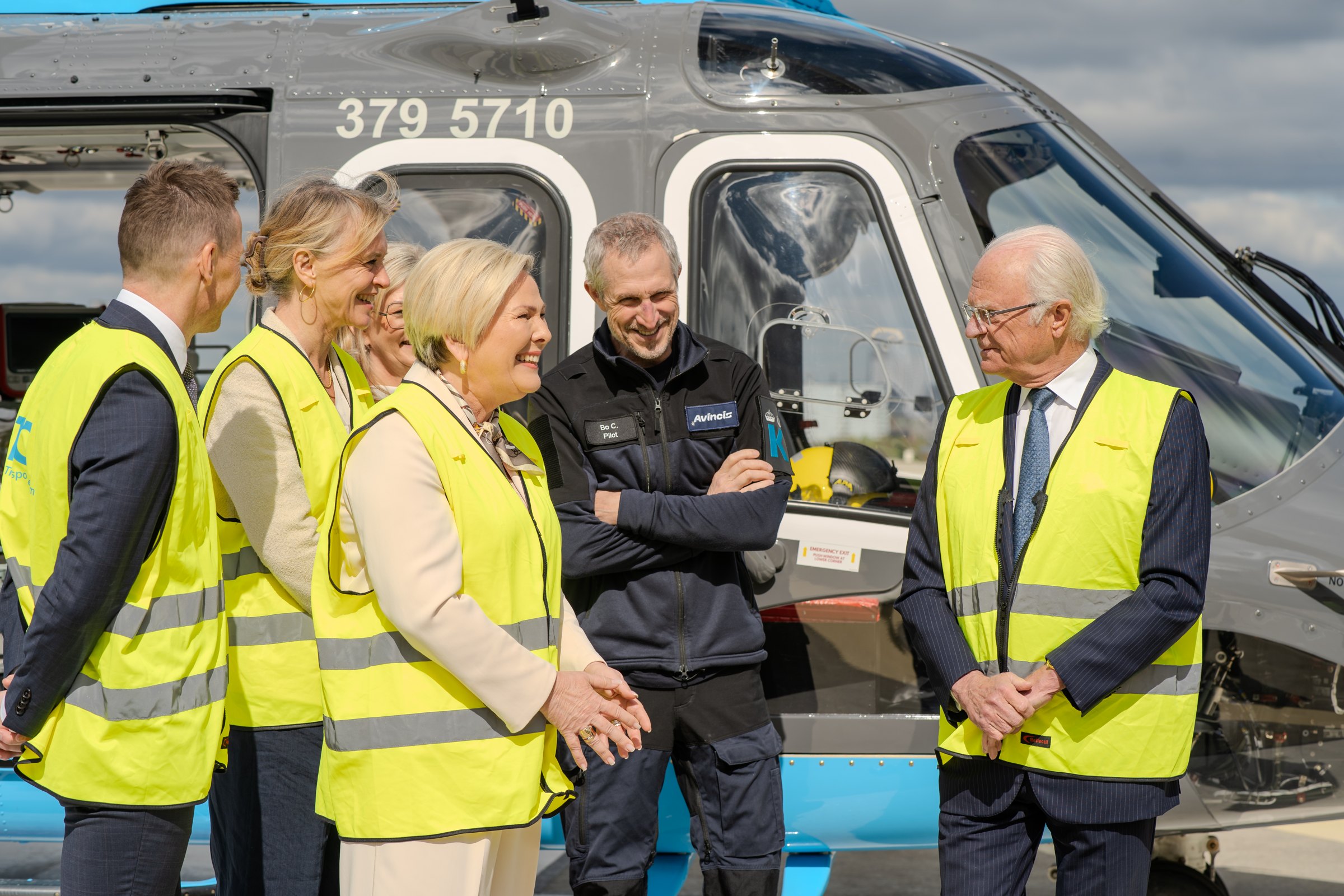
There is a palpable buzz as President Halla Tómasdóttir of Iceland and the Swedish royal couple enter the hospital building in Solna. Many gather to catch a glimpse of the dignitaries as they walk side by side through the main reception hall. After a brief photo opportunity in front of the grand artwork at the hospital’s main entrance, the group quickly moves on to the Sune Bergström Auditorium in BioClinicum.
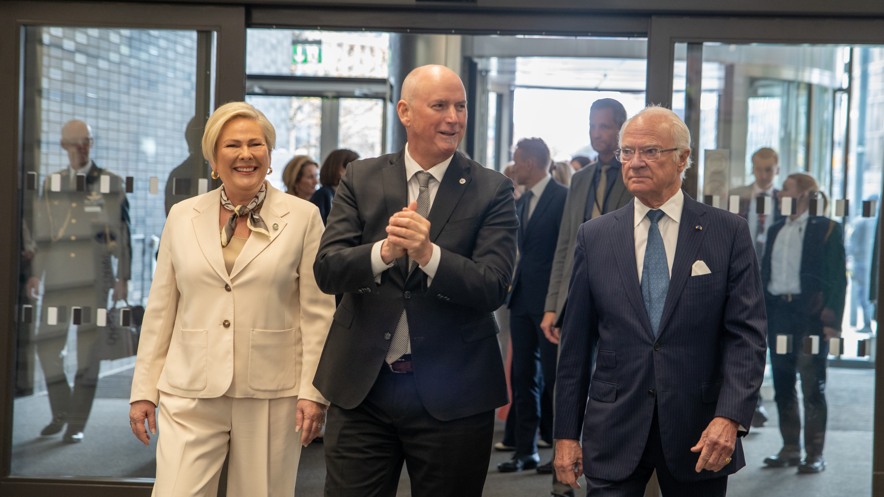
The visit aims to strengthen collaboration between Karolinska University Hospital and Landspítali – The National University Hospital of Iceland – as well as between research institutions and the life science industry. It also provides a chance to highlight the hospital’s crisis preparedness, including a visit to the helipad and a helicopter equipped with ECMO technology.
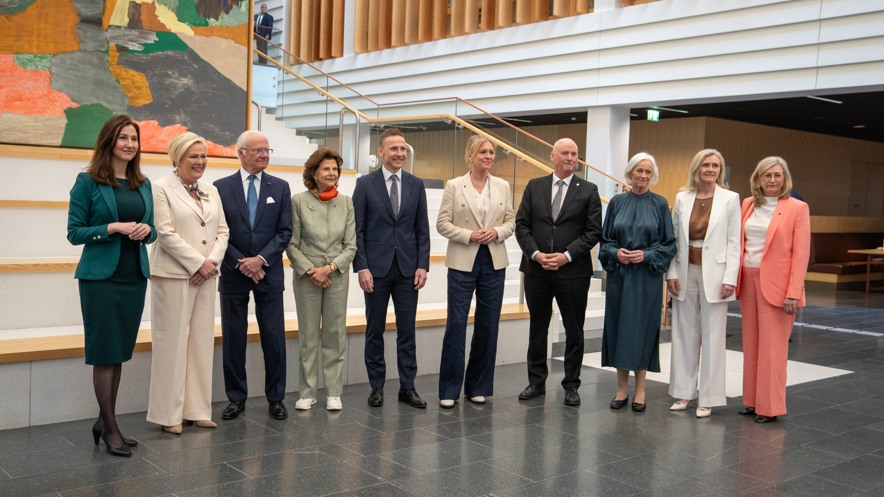
After opening remarks from Andreas Muranyi Scheutz, Director of Research and Innovation at Region Stockholm, emphasizing the importance of broad-based innovation cooperation, it’s time for Aida Hadžialić, Chair of the Regional Executive Committee of Stockholm, to take the stage. Smiling, she shares with the visitors that the Stockholm region is often referred to as “The Capital of Life” thanks to its thriving life science ecosystem. It includes more than a thousand companies, five universities – all with strong life science profiles – three university hospitals, and national agencies like the Swedish Medical Products Agency and the Public Health Agency of Sweden.

“We’ve had a long and close partnership with Iceland, and we intend to deepen it even further – with a Swede now leading the hospital,” says current Hospital Director Christophe Pedroletti with a smile, referencing the fact that two of his predecessors were Icelandic – a comment that earns warm laughter from the audience.
He adds:
“A key part of our joint efforts is through the Nordic University Hospital Alliance, NUHA. Together, we are addressing the major health challenges of our time.”
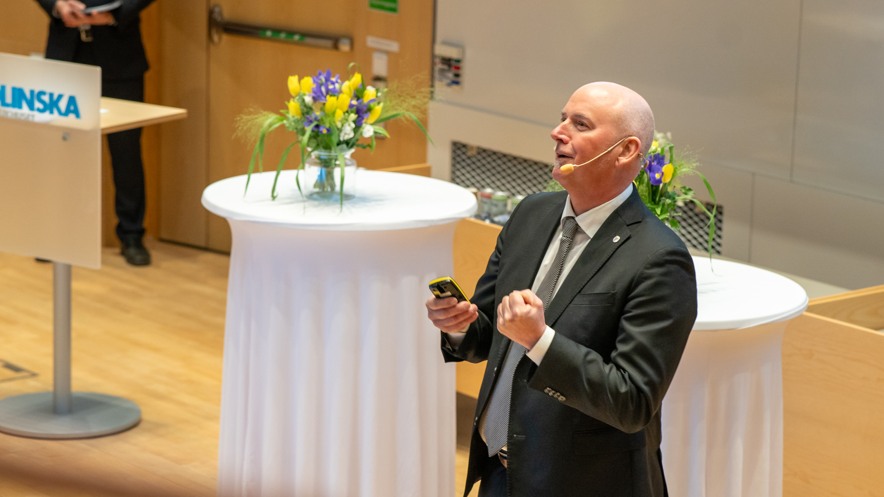
Christophe Pedroletti, Hospital Director, Karolinska University Hospital. Photo: Fredric Möller Eklund.
Iceland’s Minister of Health, Alma Möller – who holds a medical degree from Lund University – highlights that Karolinska University Hospital stands out as a flagship in European healthcare and that she has followed its medical advances with great interest over the years.
“Perhaps two of your former hospital directors had a hand in that,” she jokes back to Christophe Pedroletti before continuing:
“I’ve seen for myself the world-class quality of Swedish healthcare – in areas like neurosurgery, ECMO [heart-lung machines], and pediatric care.”
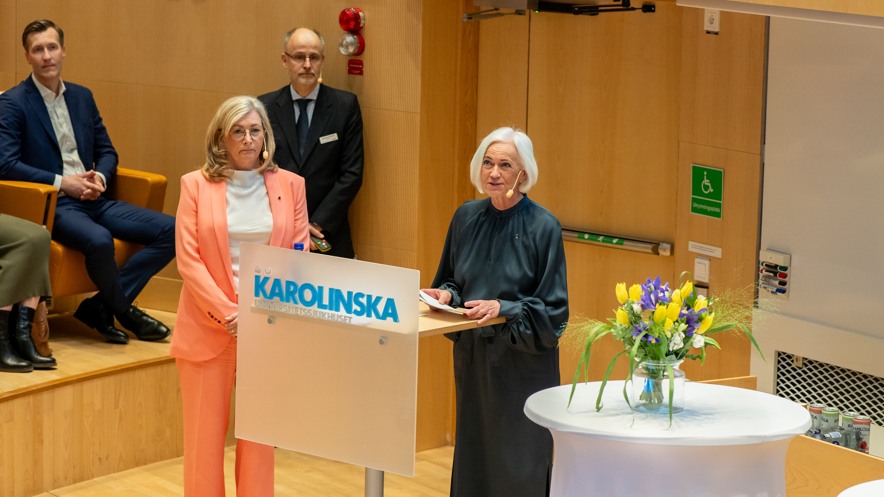
Iceland’s Minister of Health Alma Möller and Sweden’s Minister for Health Care Acko Ankarberg Johansson. Photo: Fredric Möller Eklund.
Filippa Kull, Director of Stockholm Science City, points to the geographic proximity between key stakeholders and notes that 50 percent of Sweden’s life science companies are now based in Hagastaden – home to Karolinska University Hospital: “It has to be easy to meet.”
In a concluding panel discussion, Senior Consultant and Professor Anna Wedell speaks about the successful interdisciplinary work at the Precision Medicine Center Karolinska (PMCK), where she serves as Director.
“We need to break down silos – and while we’ve already started, there’s more we can do – and replace them with new, innovative care environments,” she says.
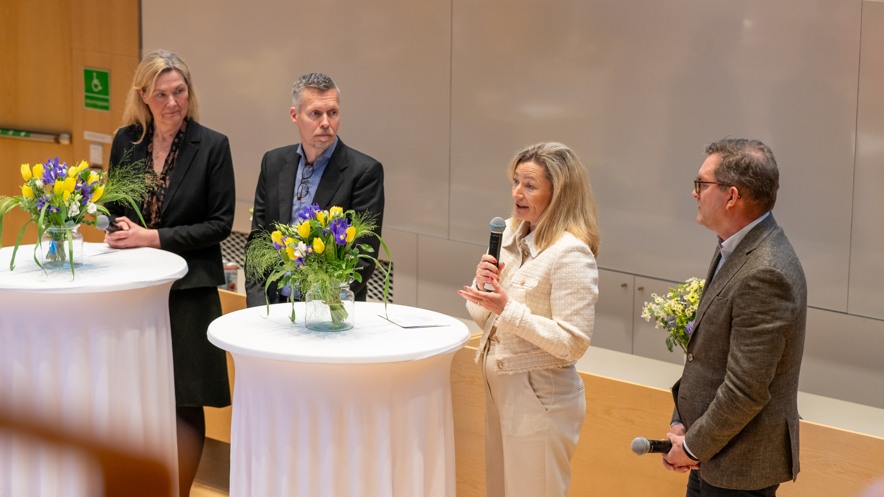
The visit concludes with the signing of a Memorandum of Understanding (MoU) between Stockholm Science City and Reykjavík Science City. After that, the Icelandic presidential couple, along with the King and Queen, make their way to the hospital’s helipad on the fourteenth floor.
There, they are welcomed by Lars Falk, Head of the Intensive Care and Transport Unit, and pilot Bo Conneryd. Numerous questions are asked about ECMO – Extra Corporeal Membrane Oxygenation – a heart-lung machine that saves the lives of the most critically ill patients by providing artificial oxygenation. The King is particularly curious about where ECMO is available.
“It’s available in limited capacity at university hospitals across the country,” replies Lars Falk, just about to begin a demonstration of how the machine works.
After a minor technical hiccup – all too typical in such moments – the King jokes:
“We are in a hurry, for heaven’s sake!”
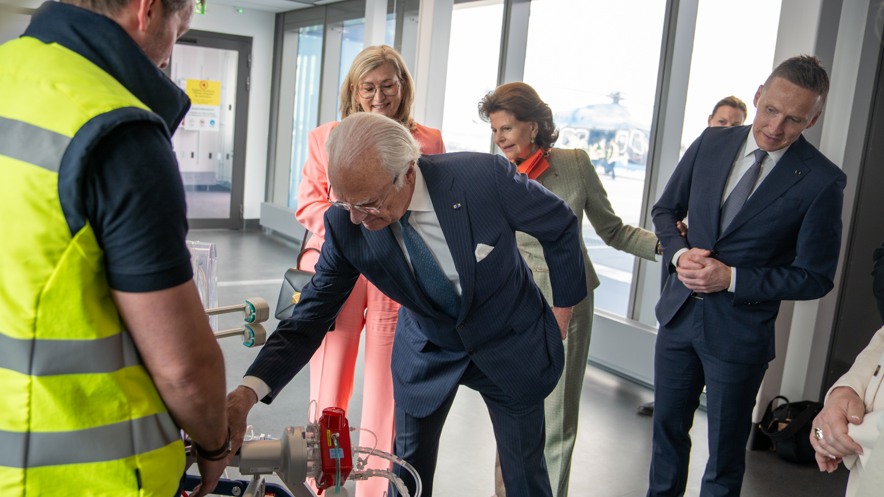
The King shows great interest in ECMO, a treatment used when all other intensive care measures have failed. Photo: Fredric Möller Eklund.
Then it’s time to step onto the helipad, which proves to be far less windy than expected. Just as the group prepares to sit in the ECMO-equipped helicopter – the only one of its kind in Sweden – the sun breaks through the clouds. The helicopter is outfitted with a Full Ice Protection System (FIPS), enabling it to fly in icy conditions. Lars Falk mentions that there are spectacular images of this helicopter flying through snowstorms in Iceland.
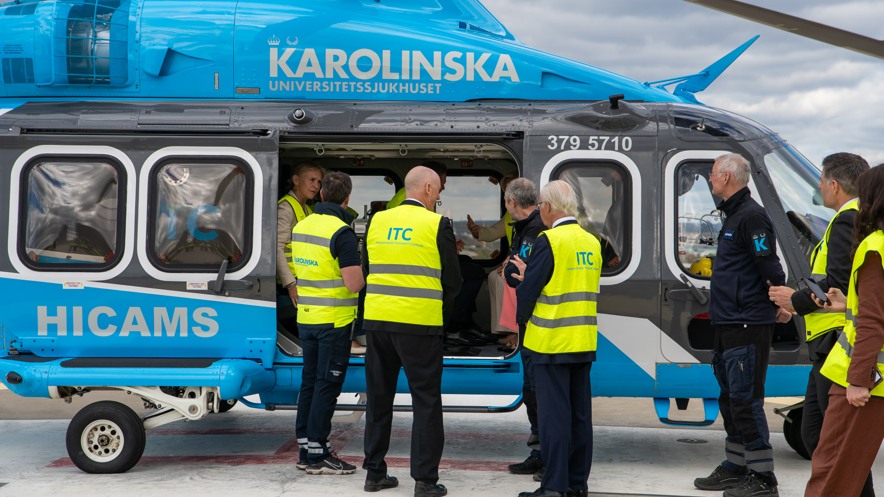
The entire Swedish-Icelandic delegation received a thorough presentation on how the intensive care helicopter is equipped. Photo: Fredric Möller Eklund.
Karolinska’s intensive care helicopter, a Leonardo AW139 model, is equipped with modern GPS-based navigation systems that enable instrument landings in poor visibility directly at hospitals certified for the new PINS landing system.
“Normally, a helicopter spends a quarter of its time grounded due to bad weather. With this one, availability is virtually unlimited,” says Lars Falk.

Alma Möller, Iceland's Minister of Health, was impressed by the cabin. In addition to the two pilots, there are four more seats for the transport team, who have excellent accessibility to the patient as the stretcher is centrally positioned across the cabin in intensive care transports. Photo: Fredric Möller Eklund.
Text: Nneka Magnusson Amu